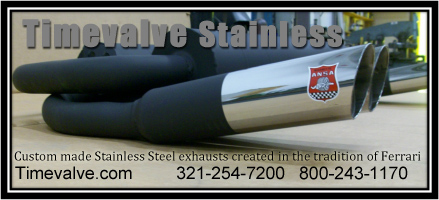Upholstery XVI

8/8/03
Upholstery XVI: Back Seat Upholstery

I was determined to get as much done with the seat back on the rear seat today, so I began by removing the remnants of the old foam from the backing board.

An air sander and a coarse sanding pad made quick work. I used a small bursts of air so not to take too much of the masonite off with the old foam and glue.

While I had the sander out, I cleaned up the back side of the seat back. The lower half of the backing board is made of aluminum, and had some old glue that needed to be removed so the new glue would stick better to the new leather.

Frank showed me a neat trick to get the foam to match the old contour of the top cushion. After some fitting, I had the top piece done!
Normally, I would be showing a step by step procedure for this, but since Frank was nice enough to share this secret with me, I’m going to keep it between us. As much as I’ve written about the upholstery work Frank has shown, I feel he has a right to keep some secrets off the web!

I wrapped the top foam piece with some thin sheet foam to carry the contour off the edge of the seat back so when the leather is attached, there will be no seams. I also attached the rest of the seat back cushions that I rebuilt a few weeks ago.

After I hog ringed the leather cover in place, I began fitting the cover to the cushion. With the help of Frank’s eye, we determined what areas would smooth out when the leather was stretched, and what areas would need more padding. We used a synthetic batting Frank calls “angel hair” to fill the areas that needed a little help. Once the top cushion was padded enough, we stapled the leather in place.

The bottom cushion required me to remove some of the padding in the pleats before I pulled the leather around and anchored it to the back. This makes for a tighter wrap around the seat frame, and give the same fit as the original seat cover. Cuts also had to be made in the leather so the mounting tabs could poke through the cover.

I also glued the horizontal section of the seat back to the foam so I could replicate the slight tuck the original seat had. This breaks up the vertical line of the pleats and keeps theses seats from looking like English cars from that era!

After attaching most of the leather cover, I was basically done for the day. I left the ends of the top cushion undone because I want the curve of the seat back to match the curve of the wheel arch inside the car. The original covers had a lot of jute stuffed in this area, so I’m sure there was also a lot of custom fitting of this seat cushion at the Pininfarina shop. I will be doing the same when I bring the car down to Frank’s shop.

The same kind of fitting will be done with the center section of this cushion. There is an arm rest that sits between the two rear cushions, and I want to make sure the three pieces line up as close to each other as possible. This can only be done when all the parts come together mounted on the car.

Next time I will be covering the rear seat cushions. The foam will have to be replaced, and I’ll have to decide which foam I will be using. After covering the top piece of the rear cushion with regular polyurethane foam, I can definitely feel the difference between it and the latex foam I used for the rest of the cushion. This made me feel good about the time and effort I put into the front cushions replacing the original foam cushions with latex foam. The dilemma now is whether I want to go through the same trouble for the rear seats that I will probably never use…Hmmmm.
Previous Restoration Day
Next Restoration Day
Home page




